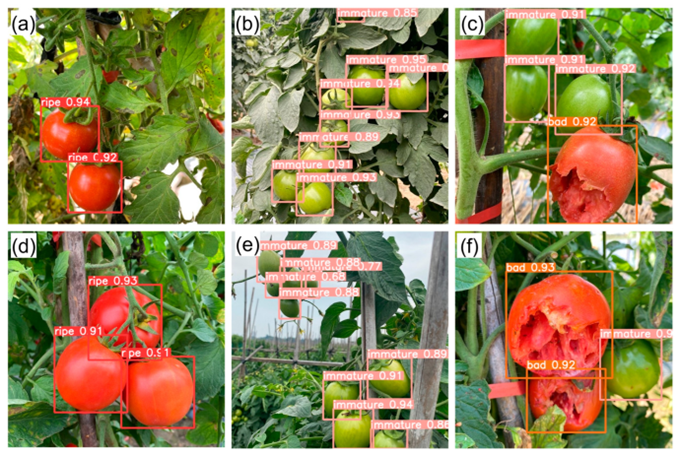August 26, 2023 | Plants |
Introduction: A recent collaborative study by National United University, Taiwan, and HCMC University of Technology and Education, Vietnam, addresses the need for efficient and automated fruit harvesting in the agricultural sector, emphasizing the importance of a circular economy approach.
The Study: The agricultural industry faces a significant challenge in labor-intensive and inefficient harvesting processes. To tackle this issue, the research introduces three object classification models based on Yolov5m, incorporating BoTNet, ShuffleNet, and GhostNet convolutional neural networks (CNNs). These models are designed for the automatic detection of tomato fruit.
Key Findings: The study involved training these models using 1508 normalized images representing three classes of cherry tomatoes: ripe, immature, and damaged. The results were promising, with the modified Yolov5m + BoTNet model demonstrating impressive detection accuracy. Specifically, the model achieved detection accuracy rates of 94% for ripe tomatoes, 95% for immature tomatoes, and 96% for damaged tomatoes. These outcomes signify a substantial advancement in the development of automated harvesting systems for tomato fruit.
Conclusion: The study showcases the potential of automated systems in revolutionizing the agricultural sector, particularly in the context of fruit harvesting. By efficiently detecting different tomato classes, this technology offers a sustainable solution that aligns with the principles of a circular economy, where waste recovery and resource efficiency play pivotal roles in addressing the challenges faced by the agricultural industry.
Read more: Tomato Fruit Detection Using Modified Yolov5m Model with Convolutional Neural Networks

Fig. | Real-world detection results obtained using the modified-Yolov5m-BoTNet model for: (a) ripe tomatoes, (b) immature tomatoes, (c) immature and damaged tomatoes, (d) ripe tomatoes, (e) immature tomatoes, and (f) damaged and immature tomatoes.





